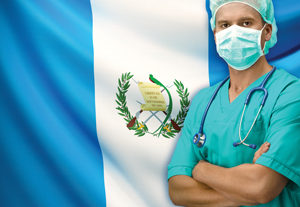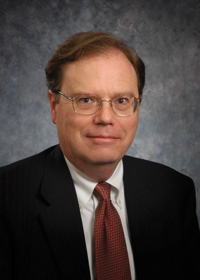Atrium Health helps Central American countries create sustainable medical programs
 Medical missions – where teams of physicians and support staff travel to developing nations and deliver intensive medical care for a week or two – save lives and give hope to people. And they are gratifying to those who make the trip. Donating equipment and supplies for such missions? Ditto.
Medical missions – where teams of physicians and support staff travel to developing nations and deliver intensive medical care for a week or two – save lives and give hope to people. And they are gratifying to those who make the trip. Donating equipment and supplies for such missions? Ditto.
But for more than 40 years, Atrium Health (formerly Carolinas HealthCare System) has been doing something different. Still looking to save lives and give hope to people in need, the Charlotte, North Carolina-based IDN works with Central American surgeons, technicians and governments to create sustainable medical programs in countries where before there were none.
“We try to build programs with longevity,” says Jim Olsen, senior vice president and chief purchasing officer. “So it’s not a situation where we go down, donate equipment, and then six months later, it’s rusted and not working.”
Equipment and consumables are, of course, essential components of sustainable medical programs. That’s where Atrium’s International Medical Outreach comes in. But just as important is the training of surgeons and others on how to use that equipment.
1971
In 1971, Francis Robicsek, a Charlotte-area heart surgeon with an avid interest in the lost Mayan civilization of Guatemala, was introduced to then-Guatemalan President Carlos Arano Osorio, who also had an interest in pre-Columbian culture. As the two got to know each other, the president asked Robicsek – who had fled a failed revolution in Hungary in 1956 – if he could help Guatemala set up a heart surgery program. Robicsek would be well-suited for the task, as he was a renowned cardiac surgeon who had performed the first bypass and first heart transplant in Charlotte.
The Guatemalan Ministry of Health assigned a young Baylor-trained Guatemalan surgeon, Dr. Raul Cruz Molina, as the future head of the cardiac program, explained Robicsek in a 2014 bylined article in the Bulletin of the American College of Surgeons. Dr. Cruz flew to Charlotte for an intensive 18-month cardiac surgical fellowship. Simultaneously, a team of Guatemalan cardiologists, anesthesiologists, perfusionists and intensive care nurses traveled to Charlotte to train at Carolinas Medical Center (then known as Charlotte Memorial Hospital). At the same time, Robicsek and the Carolinas team gathered used and refurbished perfusion equipment and vital-sign monitors.
In 1974, supported by a grant from the Heineman Foundation of Charlotte, Robicsek returned with the Guatemalan team to Guatemala and selected as their first surgical candidates some patients with relatively simple anomalies, such as atrial and ventricular septal defects and pure mitral stenosis. The diagnostic studies were conducted in Charlotte, but the first procedures themselves were performed by Guatemalans, backed by a Charlotte team of eight.
Dr. Cruz gradually accepted more and more complex cases, but soon, organizers realized that sending Guatemalan patients to Charlotte for diagnostic studies would exhaust the financial resources of the group. So with aid from President Orano Osorio, a Guatemalan Air Force transport plane regularly carried between 35 and 40 patients in need of diagnostic studies to Charlotte. Those who required additional testing underwent heart catheterizations around the clock. After being diagnosed, the patients were flown back to Guatemala, where those in need of surgery were operated on by Dr. Cruz and his team, still actively supported by a cardiac team from Charlotte.
In 1976, a cardiac program under the direction of Dr. Cruz was established in Guatemala City at the Roosevelt Hospital, the largest health institution in Guatemala. The team at Carolinas Medical Center continued its supportive role but, within a year, the number of visiting clinicians from Charlotte gradually decreased from eight to three and, finally, to none.
During the next three decades the cardiac program in Guatemala City grew into a Department of Cardiac Surgery. In 1989, UNICAR, the Guatemalan Heart Institute, was opened in a building on the Roosevelt Hospital Campus. The Cardiology-Cardiac Surgery Program gained momentum as the core of UNICAR, which today serves patients in Guatemala, Honduras, Belize and Nicaragua.
Honduras
“My first trip with Dr. Robicsek was to Honduras,” recalls Olsen. “We were in a hospital where, two years earlier, we had replaced the pediatric ward. A year before, we had installed an intensive care unit, and we were opening a cardiac cath unit. I was impressed from the beginning: I noticed that the unit we had put in two years earlier still looked good. The same thing was true for the pediatric unit. To me, this looked like something that could really help people.” From that point on, he became fully engaged with the program.
Most recently, Olsen was involved in the opening of a neonatal ICU and a pediatric ICU in Escuintla, Guatemala.
“We sat down with the people there to design the two units and to make sure the pediatricians were well-trained,” he says. “Toward the end of the process, we asked if we could send someone to Escuintla to teach CPR to 35-or-so people. One of our pediatricians and some nurses went down. When they got there, 350 people were waiting to take the class, including doctors and nurses who worked in the emergency department and cardiac catheterization units. All 350 were trained through around-the-clock sessions. So, sometimes the healthcare-related needs in Central America are very, very basic, by U.S. standards.
“But at the same time, we equipped those units with technology that is at the highest level found in Guatemala. It was 10- or 12-year-old equipment that we had replaced. We brought it up to specifications and shipped it down, along with a biomedical engineer from the U.S. to make sure it was installed properly.”
Amidst the successes are the inevitable challenges. “We take equipment down to Central America, make sure it is installed properly, and train technicians how to use it,” Olsen says. “But if it breaks, what do you do? In a lot of cases, we can help by sending a spare part. But the basic infrastructure of equipment repair there is very broken. We’re trying to figure out a way to train bioengineers to maintain equipment on their own.”
Atrium Health has sponsored success in other Central American countries as well. Within a three-year span, for example, Belize City – the largest city in Belize – opened a cardiac cath lab, a non-interventional diagnostics lab, and an open heart surgery program with equipment from Atrium Health.
“So we have big wins, and we have medium wins,” says Olsen. “The key thing from my standpoint is this: We take equipment that we don’t need anymore, make sure it’s functional, and develop programs that are sustainable internally, that is, not simply with people from the United States. We persist, and those programs get stronger over time.”
Editor’s note: Journal of Healthcare Contracting readers interested in donating equipment to International Medical Outreach can contact Jim Olsen at jim.olsen@atriumhealth.org. Major equipment needs are:
- Patient monitors with cables.
- EKG/ECG machines.
- Incubators.
- Transport incubators.
- Infant warmers.
- Phototherapy/bili lights.

